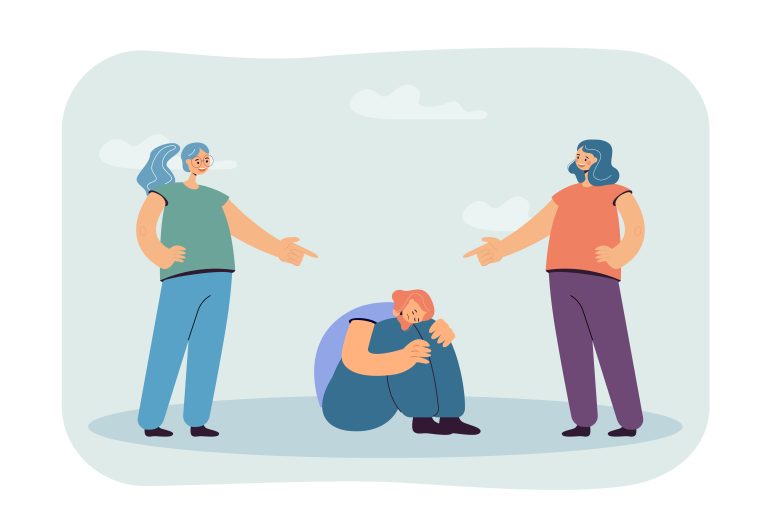Bullying in the digital age is a major problem that affects millions of people each year. Social media plays an increasingly influential role in shaping how bullying is carried out and experienced by those affected. From cyberbullying to doxing, it’s vital to understand just how serious these issues can be—and what steps we can take to address them.
In this post, we’ll break down the ways social media contributes to incidents of bullying, discuss potential solutions for deterring it from schools and home environments, and explore which initiatives are being taken around the world to combat the compassionate use of various platforms.
What is bullying and how does it occur via social media
Bullying is a prevalent issue that can occur in various forms, including physical, emotional, and verbal abuse. Nowadays, a new type of bullying has emerged through social media, causing harm through virtual means. Cyberbullying can take many forms, such as spreading rumors, sending inappropriate messages, leaving hurtful comments, and posting embarrassing pictures or videos without consent.
The anonymity and ease of access to social media platforms have made it easier for bullies to target and harass their victims. Social media bullying can have a lasting impact on the victim’s mental and emotional well-being and can leave deep scars that may take a long time to heal.
It is essential to create awareness about this issue and encourage adults and young people to speak up against cyberbullying. We all have a responsibility to make social media a safe and respectful platform for everyone to use.
The negative impact of bullying on mental health
Bullying can have severe and long-lasting effects on a person’s mental health. Constant verbal, physical, or emotional abuse can lead to depression, anxiety, and low self-esteem. Victims of bullying often feel isolated and helpless, which can also lead to thoughts of self-harm and suicide.
The damage caused by bullying can affect a person’s entire life, making it difficult to form healthy relationships or achieve their goals. It’s crucial that parents, teachers, and policymakers take steps to prevent bullying and support those who have been affected by it. No one deserves to suffer from the negative impact of bullying on mental health, and everyone deserves to live a life free from fear and intimidation.
Examples of cyberbullying and its effects
No one should be subjected to the harmful effects of cyberbullying, whether it’s direct attacks, threats, harassment, or exclusion. Cyberbullying can come in many forms, including posting embarrassing photos or comments online, spreading rumors and lies, impersonating someone else to damage their reputation, or sending malicious messages.
Its effects are devastating and can affect victims emotionally, mentally, and physically. Cyberbullying can lead to depression, anxiety, low self-esteem, and even suicide. It can also affect a person’s ability to trust and connect with others, leading to social isolation. It’s crucial that we all take action to prevent cyberbullying and promote positivity and kindness online.
Strategies for preventing cyberbullying
As technology and social media continue to grow, the concern for cyberbullying keeps increasing. Cyberbullying can affect anyone, from young children to adults, and can be emotionally damaging. It is important to take proactive steps in preventing cyberbullying.
Strategies include educating children and adults about the impact of cyberbullying, enforcing strict consequences for cyberbullying behavior, and monitoring social media and internet usage. By implementing these preventative measures, we can create a safer and more positive online environment for everyone.
How to support victims of cyberbullying
Cyberbullying is a form of bullying that can cause significant harm to its victims. As communities and schools are becoming more tech-focused, it is important to understand how we can support victims of cyberbullying. One effective way to support victims is to listen to them and validate their feelings. Show them that you are there for them and that they are not alone.
It is important to take action by reporting cyberbullying to relevant authorities or social media platforms. Lastly, encourage victims to seek professional help if they are struggling to cope with the emotional impact of cyberbullying. By taking these steps, we can create a safer and more supportive environment for cyberbullying victims.
Solutions for reducing cyberbullying
Cyberbullying has become a major problem in schools, online, and in our communities. The rise and easy access to technology has provided platforms for bullies to harass, intimidate, and spread hate with anonymity. But the lasting impact of these harmful behaviors can be detrimental to those targeted, mentally and emotionally. Finding solutions for reducing cyberbullying is crucial in creating a safe and positive environment for everyone.
Measures like increased education and awareness, strict consequences for offenders, providing safe spaces for those targeted, and utilizing technology to detect and prevent cyberbullying can go a long way in making our schools, online spaces, and community a kinder and more respectful place for all.
Last Word
Cyberbullying is an age-old problem that has been amplified by the rise of social media, but it ultimately affects physical and mental health on all levels. It can leave a lasting impact on its victims and take a toll on their well-being. No matter the form it takes, cyberbullying must be addressed in order to keep our society safe and secure.
It’s important for everyone to take an active role in preventing and responding to cyberbullying so that we can build healthy and respectful online communities. To do this, we need to recognize the signs of cyberbullying, provide strategies for intervening as bystanders or targets, create policies that protect people from harassment, and encourage open conversations about digital communication.
We also need to find ways to empower bystanders who witness online bullying and provide support for victims to ensure they feel strong enough to report it when necessary. Moreover, education in the form of lectures and workshops should be available on campuses across the country so students know how to speak up in these cases. Only by taking proactive steps to tackle this issue will we create a world free from cyberbullying and a more positive climate for everybody involved.
Frequently Asked Questions
To protect yourself from cyberbullying: be careful online, use privacy settings, block or report bullies, don’t retaliate, save evidence, talk to someone you trust, and take a break from social media if needed. Remember, cyberbullying is never acceptable and help is available if needed.
Social media can be used to stand up to bullying by sharing positive messages, speaking out against bullying behavior, reporting cyberbullying, raising awareness through campaigns and hashtags, and sharing resources for help. Together, we can create a safer and more supportive online community.
To protect yourself from cyberbullying: be careful online, use privacy settings, block or report bullies, don’t retaliate, save evidence, talk to someone you trust, and take a break if needed. Cyberbullying is never acceptable, and help is available if needed.






